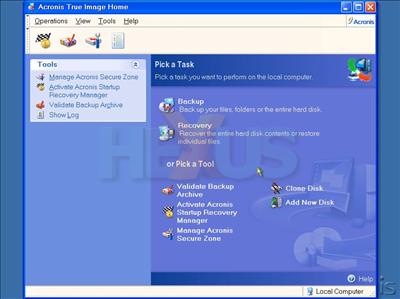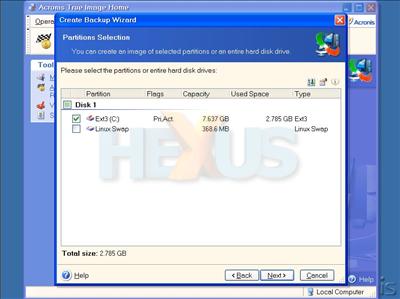Linux?
We've come quite a way through the feature-set of True Image 10, but we're not done yet. What happens if a system goes so tits-up that it becomes non-bootable? There are three different ways to save the day.
Firstly, True Image can be installed as a boot option, so if Windows won't play ball, restoration can easily be performed. This marries well with Acronis Secure Zone - the hidden partition that can be setup for disk images.
But what if the hard disk is a duffer? Easy, boot from the installation CD, or from that BartPE you made, or even from one of your backup CD/DVDs (if you chose to burn the recovery software to them as well as the backup itself).
Very similar to when in Windows, isn't it? This is actually a Linux-based recovery version of True Image. Actually, it's more than just for recovery; you can backup too. While the options are a little more limited, all the important features remain.
Oh, yeah, True Image can backup and restore Linux partitions too. Great!
One of the biggest problems with creating a backup solution that utilises Linux is that one can't always guarantee that it'll support funky disk configurations. However, Acronis has managed to get NVRAID on nForce 4 to work, something not seen by this reviewer on previous True Image versions, so it's safe to assume the support is fairly recent, if not new. Still, with every True Image update tends to come improved disk controller support from Acronis. That said, it can still be a bit tricky if you have an unusual RAID configuration, especially for pseudo-hardware RAID implementations.











